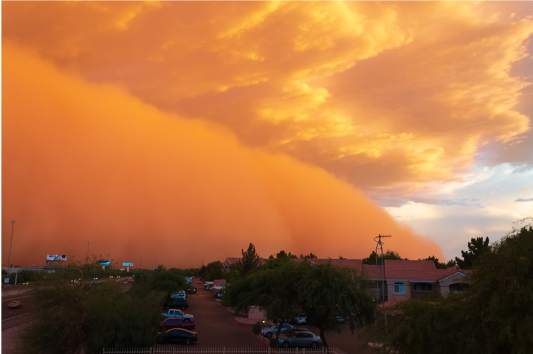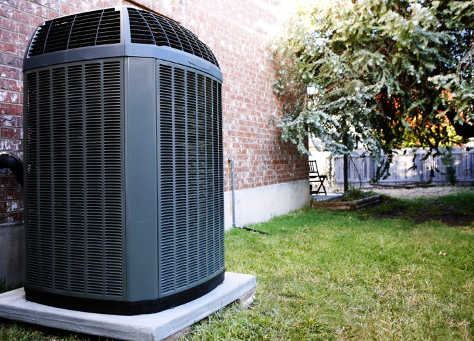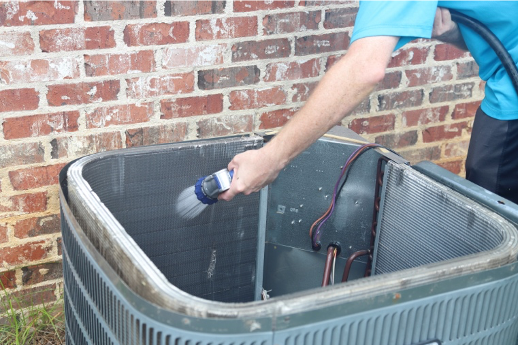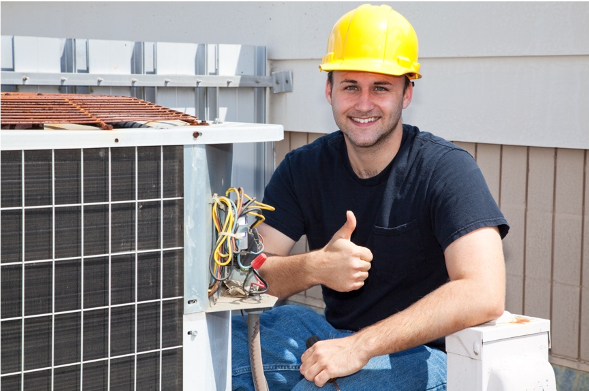Maintaining Your Heating and Cooling System
keeping your hvac unit running like new
Indoor Maintenance
1. Replace Filters
Replace the air intake filters for your HVAC system every month. The industry standard says every 3 months but, the Arizona  standard truly is once a month. Dirty filters make for a dirty house and puts a strain on the unit as it sucks for air.
standard truly is once a month. Dirty filters make for a dirty house and puts a strain on the unit as it sucks for air.
2. Consider Having The Ducts Cleaned
Duct cleaning is much more than just vacuuming the ductwork. Cracked and unsealed seams and compromised return air systems must also be addressed.
The air traveling through your supply ducts will re-circulate to your air handling equipment via the return air. It is extremely important that the return air ducts and/or plenum are thoroughly cleaned and checked for air leaks. I have never inspected an air conditioning system that didn't have some leaking. After sealing and cleaning the return air components, the evaporative coils in your air handler must be thoroughly cleaned. Some dis-assembly of your air conditioning unit is usually required for this step and should only be completed by an air conditioning specialist. Make sure they use a non-toxic cleaner. Remember, whatever they use will be released into the air after they restart the system.
Your supply ducts should be checked for leaks or disconnected joints. The company doing the work should be using an eight-inch diameter vacuum hose and some sort of duct scrubbing device. A semi-rigid air hose that uses approximately 200 psi pressure and a multi-directional pressure tip is a good scrubber. The high-pressure air dislodges the dirt from the inside walls of your ductwork and is vacuumed to a large vacuum unit that is usually mounted on a truck. Handheld units are not adequate and should only be used in areas of limited access.
This thorough cleaning and sealing of your return air, evaporative coils, air handler cabinet and supply registers should take two technicians at least half a day on an average-size home with one air conditioning system. Hence, the cost is generally twice what you see advertised by the discount duct cleaning "specialists".

**Done correctly this should only need to be done once every 8-10 years as long as homeowners keep up with monthly filter changes. Rosie recommends the 1" inch paper pleated filter that sits snugly in the holder. If homeowners have shedding pets or are hyper allergic there might be a case for more frequent cleanings.
3. Vacuum The Registers On A Regular Basis
Outdoor Maintenance
1. Clean Up Your AC Unit
Clean up any dirt, leaves and debris outside the outdoor compressor that contains the cooling fins and fan for your AC. Plants, large bushes or trees should be at least "18 from unit.
Consider building a small fence around the unit if you have dogs that are hiking their leg on the unit as their urine can destroy aluminum housing
2. Rinse Off Fan Blades & Coils
Exterior coils do get a build-up. Chuck Knight of Knight Air Conditioning says homeowners who are handy can perform this task themselves. Remove the cover of the unit and pour some water with dawn soap over the coils. With a hose moving across side to side and from top to bottom, and counter to air flow (inside to out), allow the water to run down the coils until it runs clear. Direction is important! Be careful to do as described above! Let dry and replace.
Fan blades can be rinsed off as well if they have significant dirt build up.
If you haven't done this before, ask your AC service technician how to do it or request he do it for you.
3. Check Your Furnace
If your furnace and AC unit are in the house and easily accessible – perhaps in a closet -- inspect the cabinet for holes or leaks that a technician could fix. And don't store anything in that closet.
4. Drain Water Condensate Lines
The moisture pulled from the air in your home via the AC exits the unit through a condensate line. On a humid day that can be as much as 5-10 gallons. It poses the possibility of the unit shutting off which it is designed to do in order to prevent water damage from the overflowing reservoir.
Here Are 10 Problems To Report When A Technician Pays a Visit
- Any unusual odors or noises in the house when your system starts up.
- Your AC system seems to blow all the time and never shuts off. That could mean that your system is running low on refrigerant or has an airflow restriction.
- Barely any air comes out of a particular vent in your home or there is very uneven air distribution.
- Unusual leaks seem to occur in your ceiling when it's not raining.
- Any hot or cold spots in the house
- Breaker tripping power surges that may indicate compressor issues
- Unusual rust or oil spots on the cabinet of the compressor or oily spots, puddles of oily water.
- Your power bill is higher than usual and usage is about the same as last year.
- Utility company indicates your usage is higher than normal for the neighborhood,
- The air coming out of your vents should be about 20 degrees cooler than air going into your intake vent. Hardware stores sell simple thermometers (about $10) that you can use to measure the temperature.
March Home Maintenance Calendar To-Do: #HVACspring
###
related content
DIY Q&A: Hiring A Pro To Service Your HVAC System And Avoid Scams
DIY Q&A: Does A Dust Storm Affect My Indoor Air Or Harm My Air Coniditioning System
